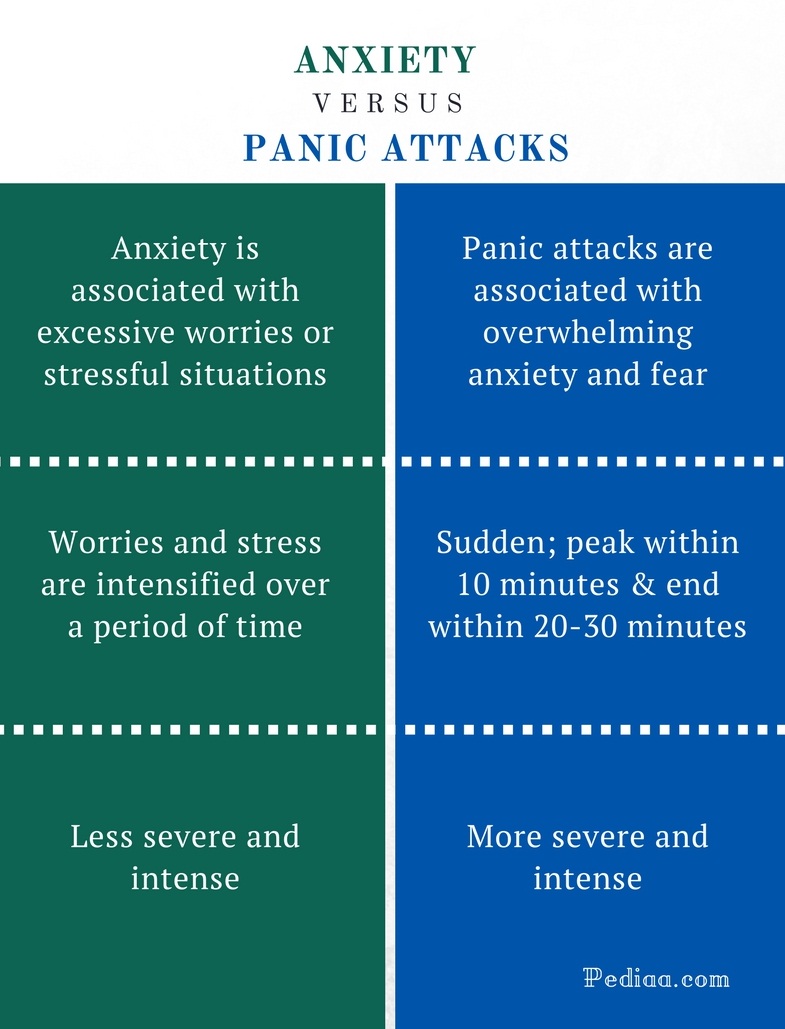The Greatest Guide To Panic Attacks: How to Help - First Aid for Life
/thyroid-disorders-and-heart-conditions-3231710-FINAL2-87d0b56e04c946ca848d5df06e3c591c.png)
What Does Six Simple Habits That Defeat Anxiety - Mental Health Do?
Anxiety attack are abrupt, extreme surges of worry, panic, or anxiety. They are frustrating, and they have physical as well as psychological symptoms. Many individuals with panic attacks may have difficulty breathing, sweat a lot, shiver, and feel their hearts pounding. Some individuals will likewise experience chest pain and a feeling of detachment from truth or themselves throughout an anxiety attack, so they may think they're having a heart attack.
Here are 11 techniques you can utilize to try to stop a panic attack when you're having one or when you feel one beginning: While hyperventilating is a symptom of anxiety attack that can increase fear, deep breathing can decrease symptoms of panic during an attack. If you're able to manage your breathing, you're less likely to experience the hyperventilating that can make other signs and the anxiety attack itself worse.

10 Simple Techniques For 5 Ways to Prevent Teen Panic Attacks - Newport Academy
Breathe in for a count of four, hold for a 2nd, and after that breathe out for a count of four: By acknowledging that you're having a panic attack instead of a heart attack, you can remind yourself that this is short-lived, it will pass, which you're OK.Take away the fear that you might be dying or that impending doom is looming, both signs of panic attacks.
Some anxiety attack come from triggers that overwhelm you. If you remain in a busy environment with a great deal of stimuli, this can feed your anxiety attack. To reduce the stimuli, close your eyes during your panic attack. Solution Can Be Seen Here can obstruct out any additional stimuli and make it easier to concentrate on your breathing.

Some Of What to Do When Your Anxiety Becomes Debilitating - EXIS

Because panic attacks can cause a feeling of detachment or separation from truth, this can combat your anxiety attack as it's approaching or really occurring. Focus on the physical sensations you are familiar with, like digging your feet into the ground, or feeling the texture of your jeans on your hands.
Some individuals find it helpful to find a single item to focus all of their attention on throughout an anxiety attack. Select one things in clear sight and consciously keep in mind whatever about it possible. For example, you may discover how the hand on the clock jerks when it ticks, which it's a little uneven.
UNDER MAINTENANCE